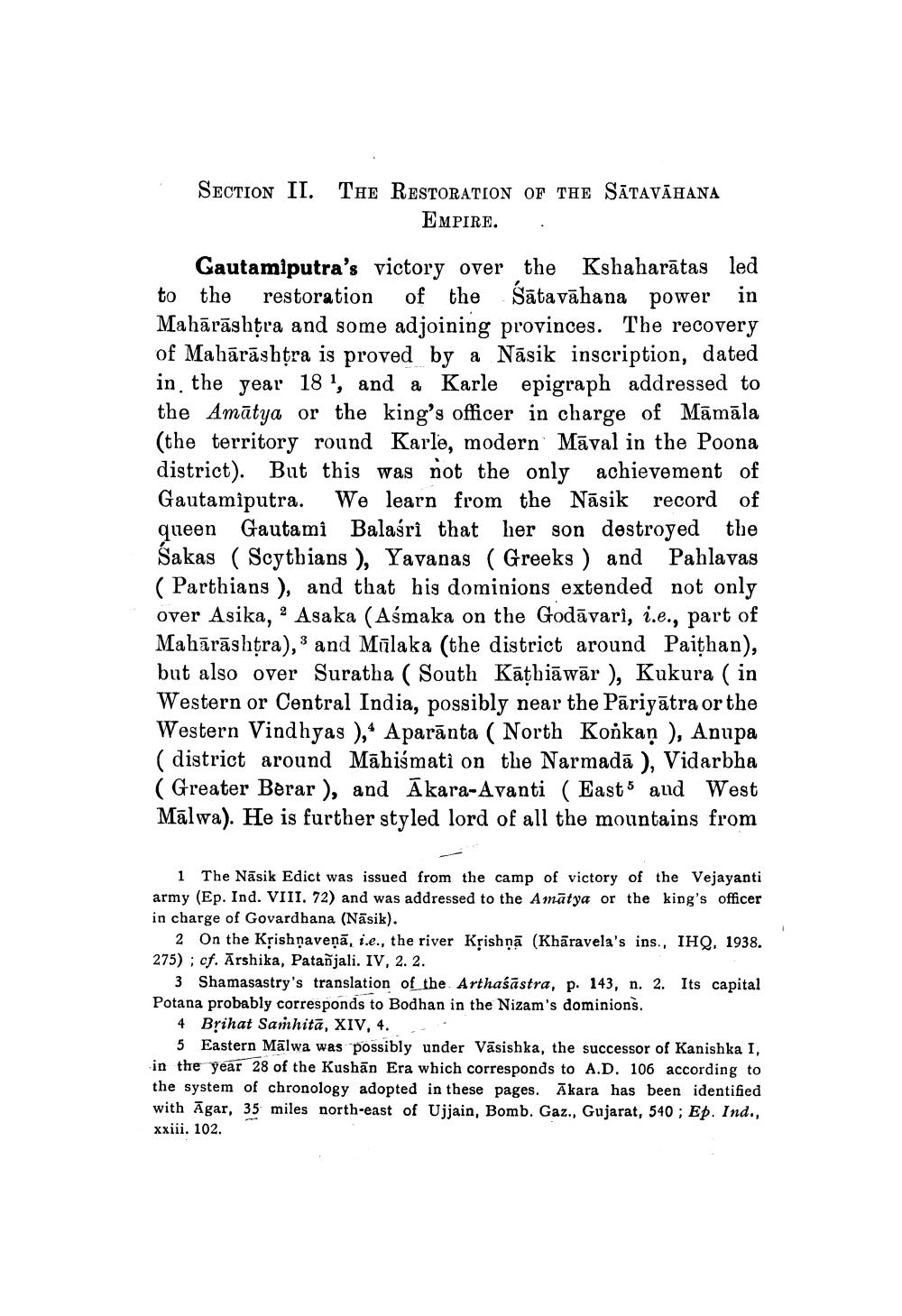________________
SECTION II. THE RESTORATION OF THE SĀTAVĀHANA
EMPIRE.
Gautamiputra's victory over the Kshaharātas led to the restoration of the Sātavāhana power in Mahārāshtra and some adjoining provinces. The recovery of Mahārāshtra is proved by a Nāsik inscription, dated in the year 18 , and a Karle epigraph addressed to the Amātya or the king's officer in charge of Māmāla (the territory round Karle, modern Māval in the Poona district). But this was not the only achievement of Gautamiputra. We learn from the Nāsik record of queen Gautami Balaśrî that her son destroyed the Sakas ( Scythians ), Yavanas ( Greeks ) and Pahlavas ( Parthians ), and that his dominions extended not only over Asika, 2 Asaka (Aśmaka on the Godāvari, i.e., part of Mahārāshtra), 3 and Mülaka (the district around Paithan), but also over Suratha ( South Kāthiāwār ), Kukura ( in Western or Central India, possibly near the Pāriyātra or the Western Vindhyas ),* Aparānta ( North Konkan ), Anupa ( district around Māhismati on the Narmadā ), Vidarbha (Greater Berar ), and Ākara-Avanti (East 5 and West Mālwa). He is further styled lord of all the mountains from
1 The Nāsik Edict was issued from the camp of victory of the Vejayanti army (Ep. Ind. VIII. 72) and was addressed to the Amatya or the king's officer in charge of Govardhana (Nasik).
2 On the Krishnaveņā, ie, the river Krishna (Khāravela's ins., IHQ. 1938. 275); cf. Arshika, Patañjali. IV, 2.2.
3 Shamasastry's translation of the Arthaśāstra, p. 143, n. 2. Its capital Potana probably corresponds to Bodhan in the Nizam's dominions.
4 Brihat Samhitā, XIV. 4.
5 Eastern Mālwa was possibly under Vāsishka, the successor of Kanishka I, in the year 28 of the Kushān Era which corresponds to A.D. 106 according to the system of chronology adopted in these pages. Akara has been identified with Āgar, 35 miles north-east of Ujjain, Bomb. Gaz., Gujarat, 540 ; Ep. Ind., xxiii. 102.




